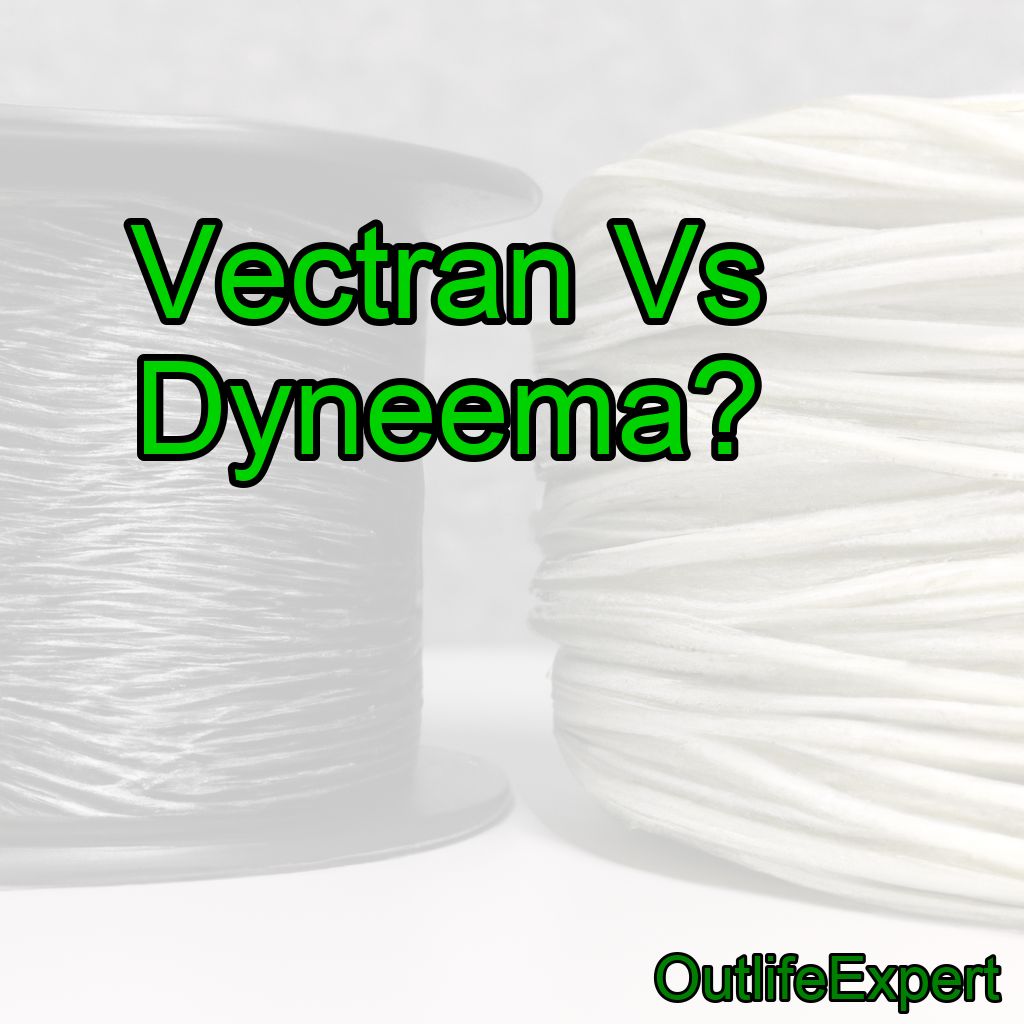When it comes to high-performance materials, two names stand out: Vectran and Dyneema. Both are known for their exceptional strength, durability, and versatility in various applications. However, the question remains: which one is better? In this blog post, we will delve deep into the world of these two remarkable materials and compare them in terms of their properties, applications, and overall performance.
Vectran vs Dyneema: A Comprehensive Comparison
What is Vectran?
Vectran is a high-performance multifilament yarn spun from liquid crystal polymer (LCP). It was developed by Kuraray, a Japanese manufacturer, and is known for its exceptional strength, low stretch, and resistance to abrasion, UV radiation, and chemicals. Vectran is used in a variety of applications, including aerospace, military, sports equipment, and marine industries.
What is Dyneema?
Dyneema is an ultra-high molecular weight polyethylene (UHMWPE) fiber that is manufactured by DSM, a Dutch multinational company. It is known for its exceptional strength-to-weight ratio, making it one of the strongest fibers in the world. Dyneema is also highly resistant to abrasion, chemicals, and UV radiation. It is widely used in applications such as personal protective equipment, ropes, nets, sails, and composites.
Strength and Weight
When it comes to strength, both Vectran and Dyneema offer outstanding performance. Vectran has a tensile strength of about 28 grams/denier, while Dyneema has an impressive tensile strength of 34-45 grams/denier, depending on the grade. In terms of strength-to-weight ratio, Dyneema is the clear winner, with a ratio that is up to 15 times greater than steel and 40% stronger than aramid fibers such as Kevlar.
Bottom line: Dyneema is stronger than Vectran in terms of tensile strength and strength-to-weight ratio.
Durability and Abrasion Resistance
Both Vectran and Dyneema are known for their excellent durability and abrasion resistance. Vectran’s liquid crystal polymer composition gives it outstanding resistance to abrasion, while Dyneema’s ultra-high molecular weight polyethylene composition provides similar protection. However, Dyneema tends to have a slightly higher abrasion resistance than Vectran.
Bottom line: Dyneema has a slight edge over Vectran in terms of abrasion resistance.
UV and Chemical Resistance
Again, both materials offer exceptional resistance to UV radiation and chemicals. Vectran’s LCP composition makes it highly resistant to UV degradation, while Dyneema’s UHMWPE composition provides similar resistance. Both materials are also highly resistant to chemicals, including acids, alkalis, and solvents.
Bottom line: Vectran and Dyneema are equally resistant to UV radiation and chemicals.
Creep and Stretch
Creep, or the tendency of a material to deform under constant stress over time, is an important factor to consider in high-performance applications. Vectran has a very low creep, making it ideal for applications where minimal elongation is desired. Dyneema, on the other hand, has a higher creep than Vectran, which can be a disadvantage in some applications.
Bottom line: Vectran has a lower creep and stretch than Dyneema.
Cost
In terms of cost, Dyneema tends to be more expensive than Vectran. This is primarily due to the higher production costs associated with UHMWPE compared to LCP. However, the superior strength-to-weight ratio and other performance advantages of Dyneema may justify the higher cost in some applications.
Bottom line: Dyneema is generally more expensive than Vectran.
Vectran vs Dyneema: Applications
Aerospace and Military
Both Vectran and Dyneema are used in aerospace and military applications due to their high strength, low weight, and resistance to harsh environmental conditions. Vectran has been used in space missions, such as the Mars Rover’s airbags, while Dyneema is used in ballistic protection and as a composite material for lightweight armor.
Marine and Sailing
In the marine and sailing industries, both Vectran and Dyneema are used for their strength, durability, and resistance to harsh environmental conditions. Vectran is commonly used in high-performance sailcloth and ropes, while Dyneema is used for ropes, nets, and sails.
Sports Equipment
Both materials are also used in sports equipment, such as climbing ropes, paragliding lines, and kite lines. Vectran is often used in high-performance bicycle tires, while Dyneema is used in fishing lines, gloves, and protective gear.
Conclusion: Vectran vs Dyneema – Which is Better?
In conclusion, both Vectran and Dyneema offer exceptional performance in various high-performance applications. The choice between the two depends on the specific requirements of your application and your budget. Here are 10 facts about Vectran and Dyneema to help you decide:
1.Vectranis a liquid crystal polymer (LCP) fiber.
2.Dyneemais an ultra-high molecular weight polyethylene (UHMWPE) fiber.
3.Dyneemahas a higher tensile strength and strength-to-weight ratio than Vectran.
4. Both materials have excellentabrasion resistance, with Dyneema having a slight edge.
5. Both materials are highly resistant toUV radiationandchemicals.
6.Vectranhas a lower creep and stretch than Dyneema.
7.Dyneematends to be more expensive than Vectran.
8. Both materials are used inaerospace, military, marine, and sportsapplications.
9. Vectran is ideal for applications requiring minimal elongation, while Dyneema is better suited for applications requiring high strength-to-weight ratios.
10. The choice between Vectran and Dyneema depends on yourspecific applicationandbudget.





